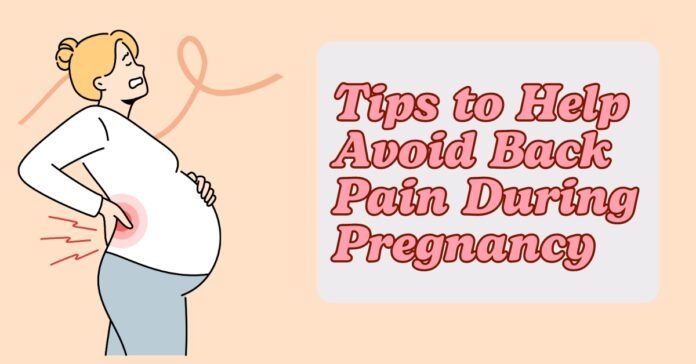
Pregnancy is a beautiful and transformative journey, but it often comes with physical challenges, including back pain. As your body adjusts to accommodate your growing baby, added weight and a shifting center of gravity can strain your back, leading to discomfort. However, with the right knowledge and proactive measures, you can minimize and even avoid back pain during pregnancy.
This guide explores practical tips, exercises, and lifestyle adjustments to help you maintain a healthy spine, promote proper posture, and enjoy a more comfortable pregnancy experience.
Understanding the Types of Back Pain in Pregnancy
During pregnancy, back pain can manifest in various forms due to physical changes and increased stress on the body. Here are the common types of back pain experienced:
1. Lumbar Pain
This is the most common type of back pain during pregnancy, affecting the lower back. It usually results from the spine’s increased curvature as the growing uterus shifts the center of gravity forward. Poor posture, improper lifting techniques, and lack of lower back support can exacerbate lumbar pain.
2. Pelvic Girdle Pain (PGP)
Also known as symphysis pubis dysfunction (SPD), PGP involves pain in the pelvic joints, including the sacroiliac joints at the back of the pelvis and the symphysis pubis joint at the front. Hormonal changes during pregnancy can cause these joints to relax and increase mobility, leading to instability and pain, especially during activities like walking, climbing stairs, or changing positions.
3. Sciatica
Sciatic nerve pain occurs when the growing uterus puts pressure on the sciatic nerve, running from the lower back through the hips and buttocks down each leg. This pressure can cause shooting pain, numbness, or tingling sensations along the nerve’s path.
4. Upper Back Pain
Although less common than lower back pain, some women may experience discomfort or pain in the upper back (thoracic spine) during pregnancy. This can result from posture changes, increased breast size, and strain on the muscles and ligaments supporting the spine.
5. Muscle Spasms
Pregnancy-related back pain can also involve muscle spasms, which occur when muscles contract involuntarily, causing sudden, sharp pain. Overexertion, poor posture, or sudden movements can trigger muscle spasms.
6. Round Ligament Pain
While not strictly back pain, round ligament pain can cause discomfort in the lower abdomen and groin area, which may radiate to the lower back. This pain occurs as the ligaments that support the uterus stretch and thin to accommodate the growing baby.
Each type of back pain during pregnancy may require specific management strategies, including exercise, proper posture, ergonomic adjustments, and sometimes, physical therapy or chiropractic care. It’s essential to consult with your healthcare provider if you experience persistent or severe back pain for personalized advice and appropriate treatment options.
Tips and Techniques to Avoid Back Pain During Pregnancy
- Wear Supportive Footwear: Choose athletic or low-heeled shoes with good arch support to reduce spine strain.
- Use a Low Stool: If standing for long periods causes back pain, place one foot on a low stool and alternate feet. This helps tilt your pelvis forward and keeps your back in a neutral position. Use the same technique when sitting for prolonged periods.
- Perform Pelvic Tilts: In your first trimester, reduce lower back pain and strengthen your pelvis with pelvic tilts. Lie on your back with knees bent and feet flat. Rock back and push your pelvis and lower back into the floor while tightening your stomach and buttocks. Hold for 2 seconds and release. Do 10 repetitions for two to three sets.
- Leg Lifts: Strengthen your buttock and hip muscles by lying on your side and doing leg lifts. Tighten your thigh muscle and buttocks while lifting your leg 8 to 10 inches off the floor. Hold for 3 to 5 seconds and lower your leg. Do 5 reps per leg and gradually work up to 10 reps.
- Sleep Comfortably: Sleep on your side with a pillow between your legs to alleviate lower back pain. In the second and third trimesters, a thin pillow under the abdomen may provide additional comfort.
- Wear a Maternity Support Belt: A support belt can reduce back pain while walking, standing for long periods, or lying in bed by giving your back added support.
- Use Ice and Heat Packs: Apply ice and heat packs alternately for 10 to 15 minutes to your back to reduce muscle strain and swelling. Set aside time daily to relax and give your back a break.
- Avoid Slouching: Use a rolled-up towel or lumbar cushion behind your lower back to maintain good posture while sitting.
- Exercise Regularly: Enjoy daily walks of 20 to 30 minutes, one of the easiest and most beneficial exercises.
- Seek Professional Help: If you experience persistent or severe back pain, consult with your healthcare provider. They may recommend physical therapy, chiropractic care, or other specialized treatments.
Conclusion
Preventing and managing back pain during pregnancy is essential for the well-being and comfort of expectant mothers. By incorporating the tips and techniques discussed in this guide—practicing good posture, engaging in regular exercise, utilizing proper body mechanics, wearing supportive footwear, and seeking prenatal massages or physical therapy if needed—you can significantly reduce the risk of back pain and its impact on your daily life.
Always consult with your healthcare provider for personalized advice and guidance. Remember, every pregnancy is unique, and what works for one person may not work for another. Prioritize self-care, listen to your body, and make adjustments as necessary to ensure a healthier, more comfortable pregnancy journey. Using pregnancy monitoring devices, such as a handheld fetal Doppler, can help track your progress and ensure both your health and your baby’s health are maintained.

